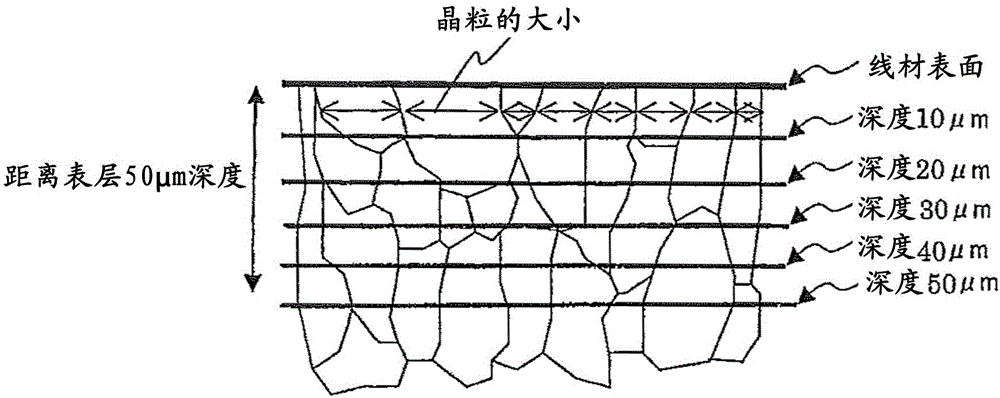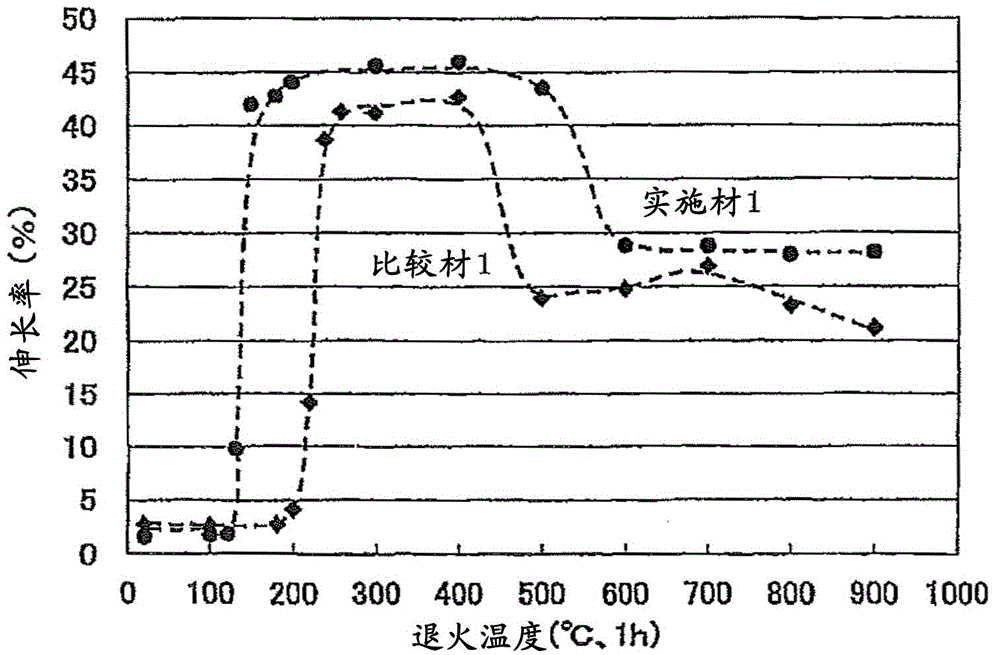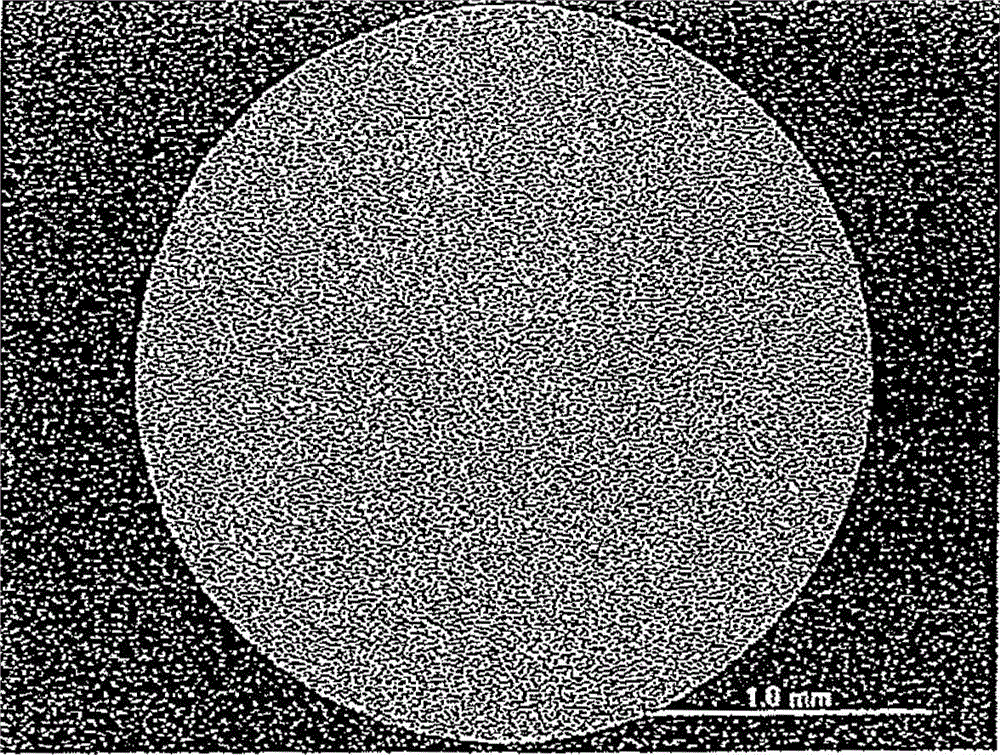copper bonding wire
A bonding wire, copper alloy technology, applied in electrical components, circuits, electrical solid devices, etc., can solve the problem of high cost
- Summary
- Abstract
- Description
- Claims
- Application Information
AI Technical Summary
Problems solved by technology
Method used
Image
Examples
Embodiment 1
[0102] [Manufacture of soft low-concentration copper alloy material (2.6mm diameter)]
[0103] As a test material, a φ8 mm copper wire (wire rod, processing degree 99.3%) having an oxygen concentration of 7 mass ppm to 8 mass ppm, a sulfur concentration of 5 mass ppm, and a titanium concentration of 13 mass ppm was produced. The φ8mm copper wire was produced by performing hot rolling processing by the SCR continuous casting and rolling method (South Continuous Rod System). Regarding Ti, molten copper melted in a shaft furnace is made to flow in a tank under a reducing gas atmosphere, the molten copper flowing in the tank is introduced into a casting pot in the same reducing gas atmosphere, and Ti is added to the casting pot Afterwards, it is passed through a nozzle, and an ingot rod is made by using the mold formed between the casting wheel and the endless belt. This ingot rod was subjected to hot rolling processing to produce a φ8 mm copper wire. Next, cold wire drawing was...
Embodiment 2
[0124] [铜接合线]
[0125] The procedure was the same as in Example 1 of the above-mentioned soft low-concentration copper alloy material up to the production of a φ2.6 mm-sized copper wire. The above-mentioned copper wire was wire-drawn to φ0.9 mm, and once annealed in an electric annealing furnace, it was drawn to φ0.05 mm. Next, moving annealing was performed at 400° C. to 600° C. for 0.8 to 4.8 seconds in a tubular furnace to obtain a material for Example material 2 . As a comparison, 4N copper (99.99% or more, OFC (oxygen-free copper)) with a diameter of 0.05mm was also produced under the same processing and heat treatment conditions, and it was made into the material of comparative material 2. The mechanical properties (tensile strength, elongation, hardness), grain size of these materials were determined.
[0126] The average crystal grain size in the surface layer measures the crystal grain size in the range of length 0.025 mm from the surface in the radial cross-section...
Embodiment 3
[0155] (Regarding the crystal structure of a copper bonding wire with a diameter of 0.26mm at an annealing temperature of 600°C)
[0156] Figure 11 A cross-sectional photograph showing the radial cross-sectional structure of a sample of Example Material 3, which has the same composition as Example Material 1 and was annealed at an annealing temperature of 600°C for 1 hour with respect to a wire rod with a diameter of 0.26 mm, Figure 12 It is a diagram showing a cross-sectional photograph of a radial cross-sectional structure of Comparative Material 3.
[0157] Such as Figure 11 with Figure 12 As shown, in the crystal structure of Comparative Material 3, crystal grains of equal size are uniformly arranged as a whole from the surface portion to the central portion. On the other hand, in the crystal structure of Example Material 3, the crystal grain size is sparse as a whole. In particular, the crystal grain size in the layer formed thinly near the surface in the cross-sec...
PUM
| Property | Measurement | Unit |
|---|---|---|
| particle size | aaaaa | aaaaa |
| tensile strength | aaaaa | aaaaa |
| Vickers hardness | aaaaa | aaaaa |
Abstract
Description
Claims
Application Information
 Login to View More
Login to View More - R&D
- Intellectual Property
- Life Sciences
- Materials
- Tech Scout
- Unparalleled Data Quality
- Higher Quality Content
- 60% Fewer Hallucinations
Browse by: Latest US Patents, China's latest patents, Technical Efficacy Thesaurus, Application Domain, Technology Topic, Popular Technical Reports.
© 2025 PatSnap. All rights reserved.Legal|Privacy policy|Modern Slavery Act Transparency Statement|Sitemap|About US| Contact US: help@patsnap.com



